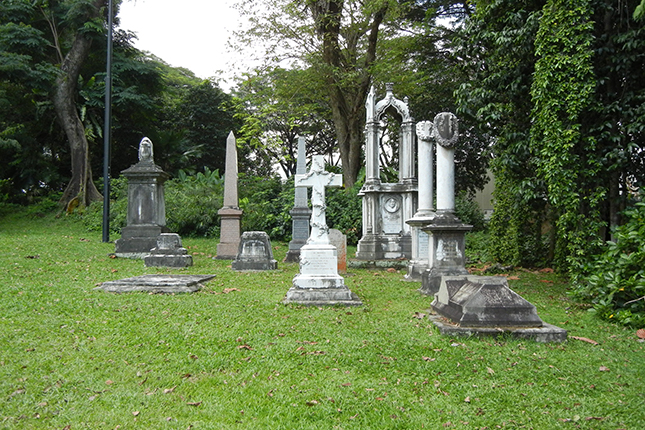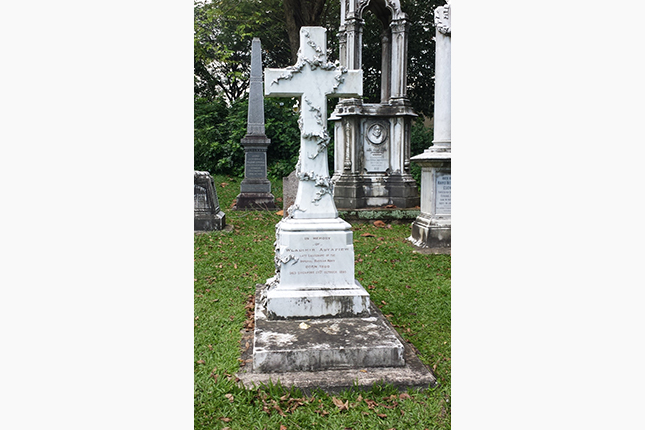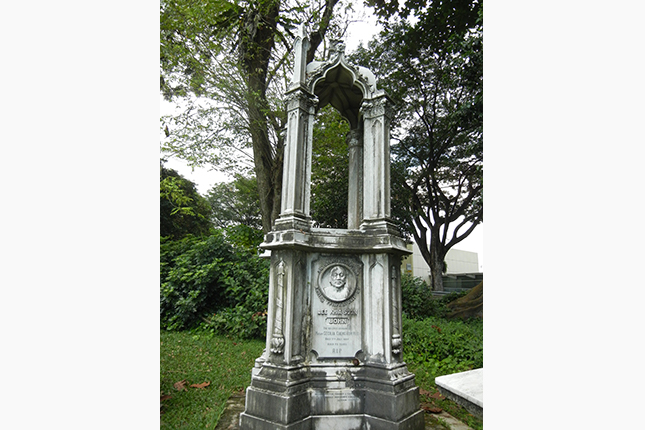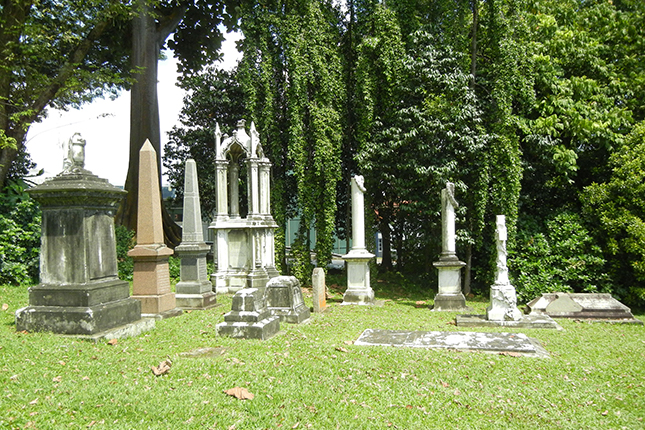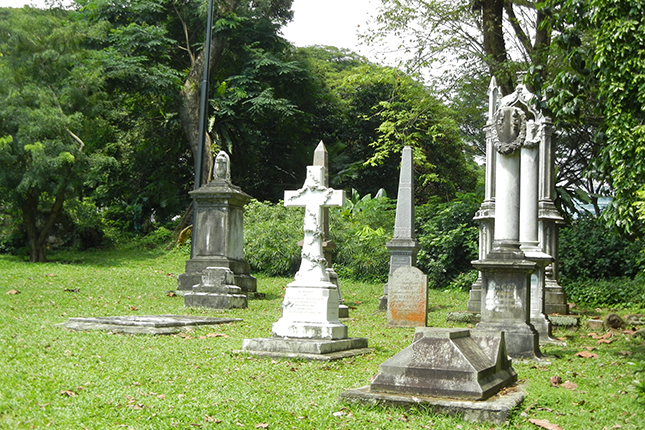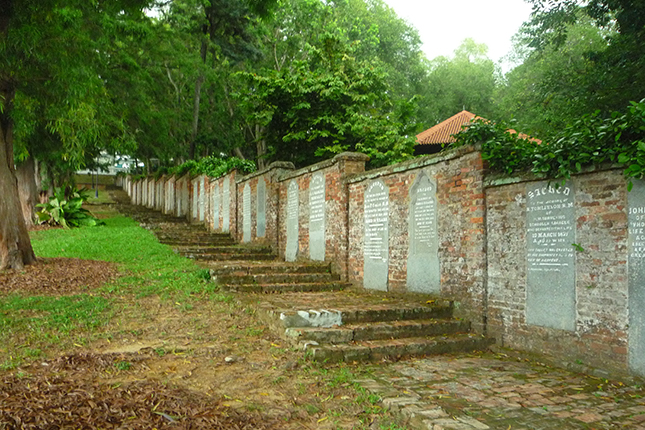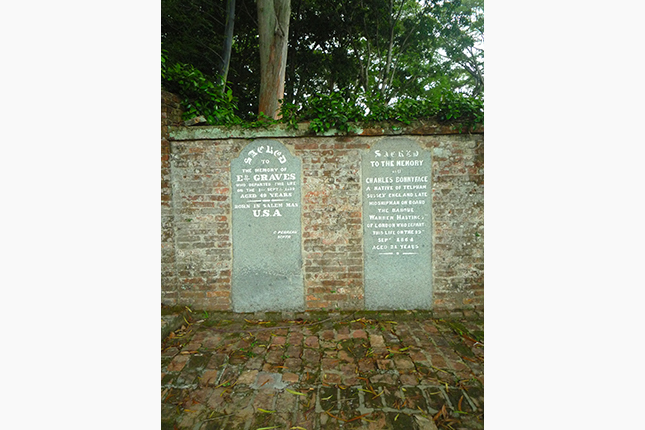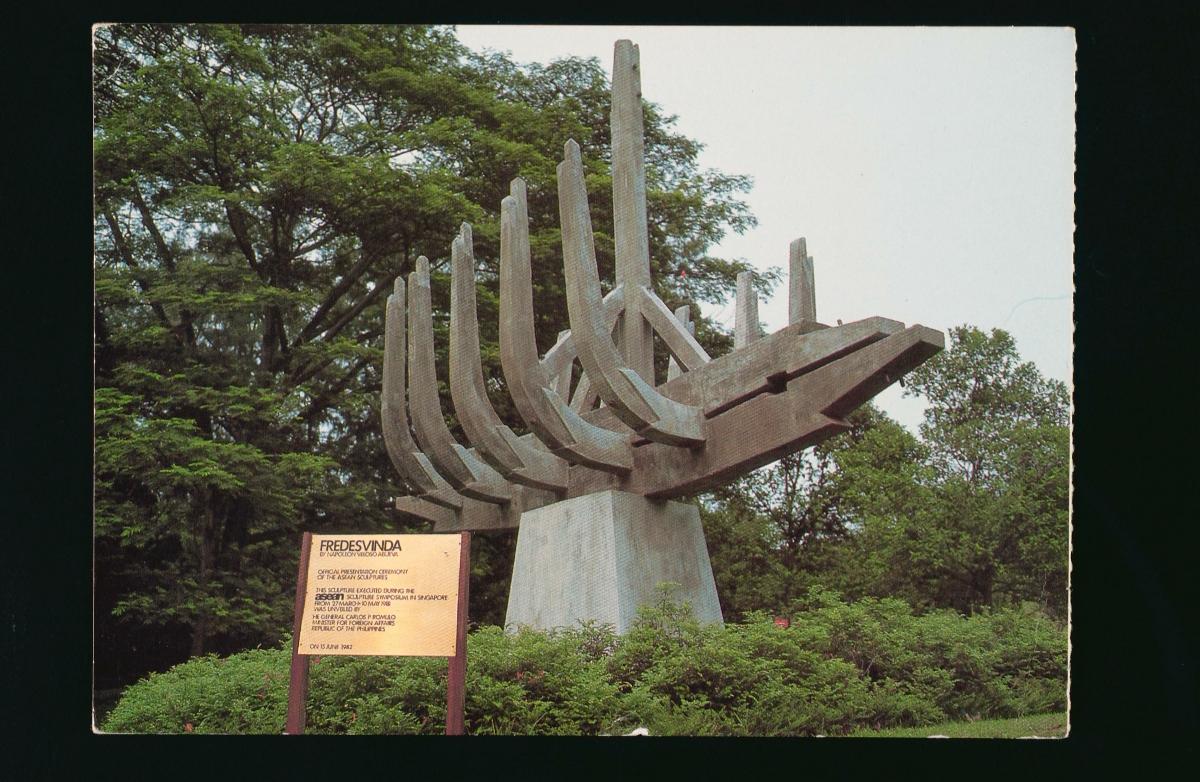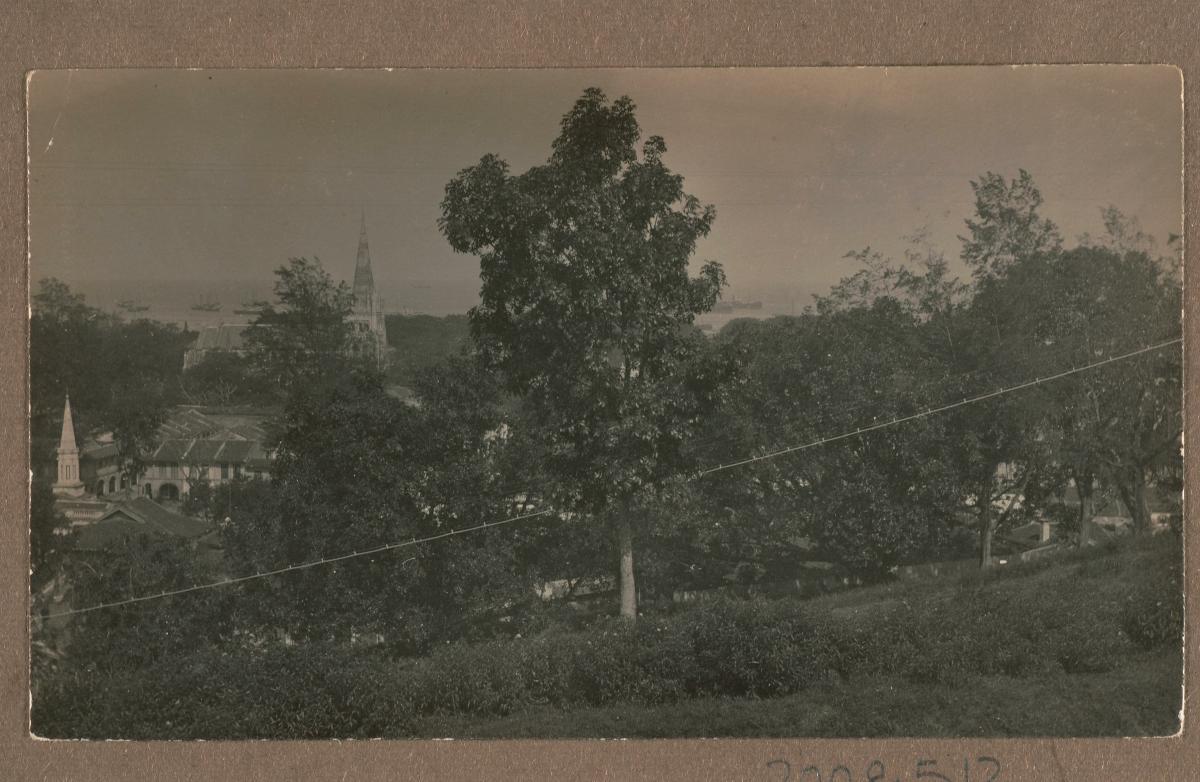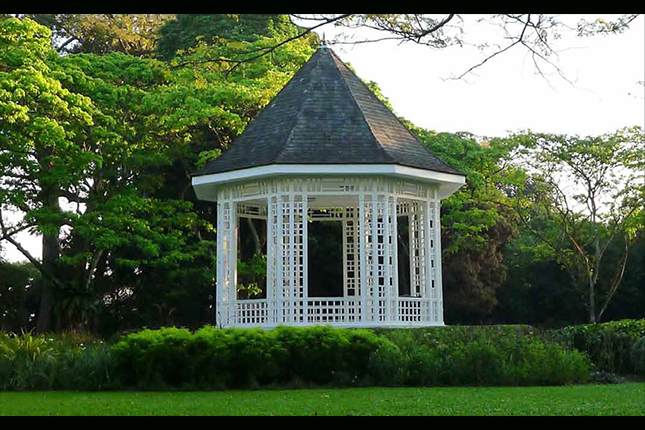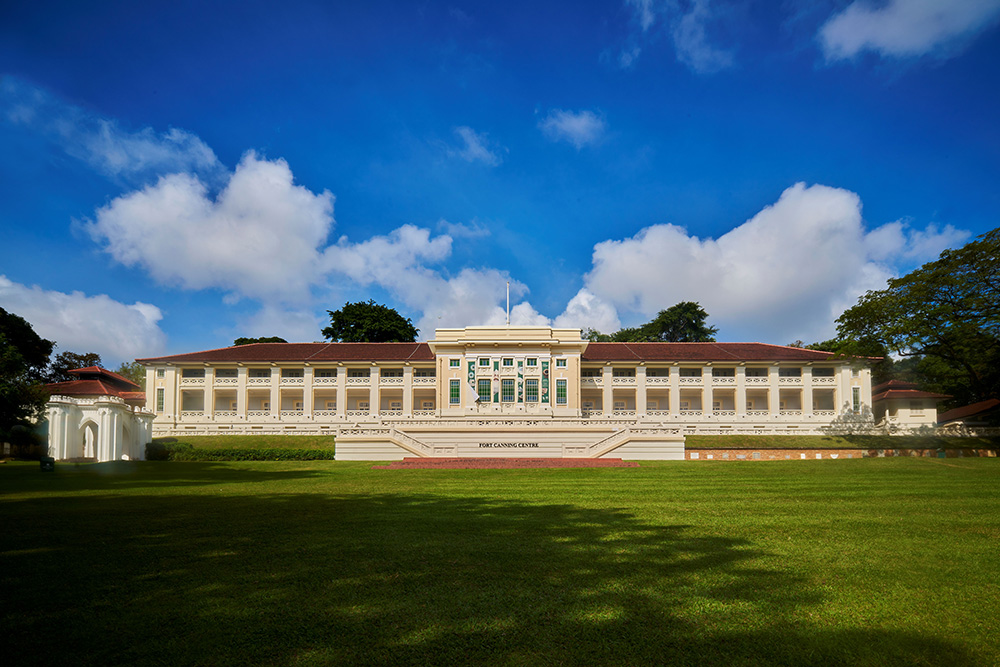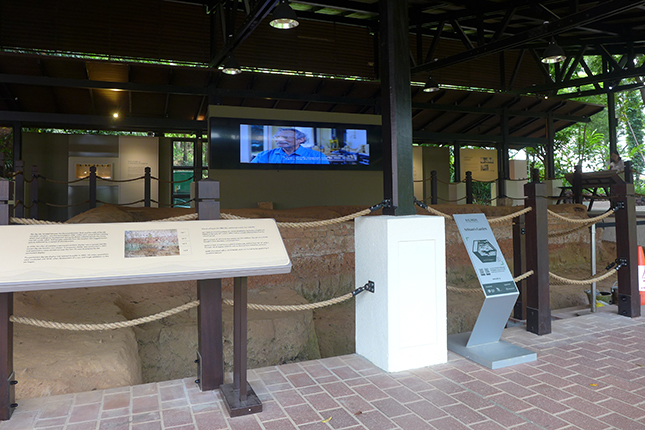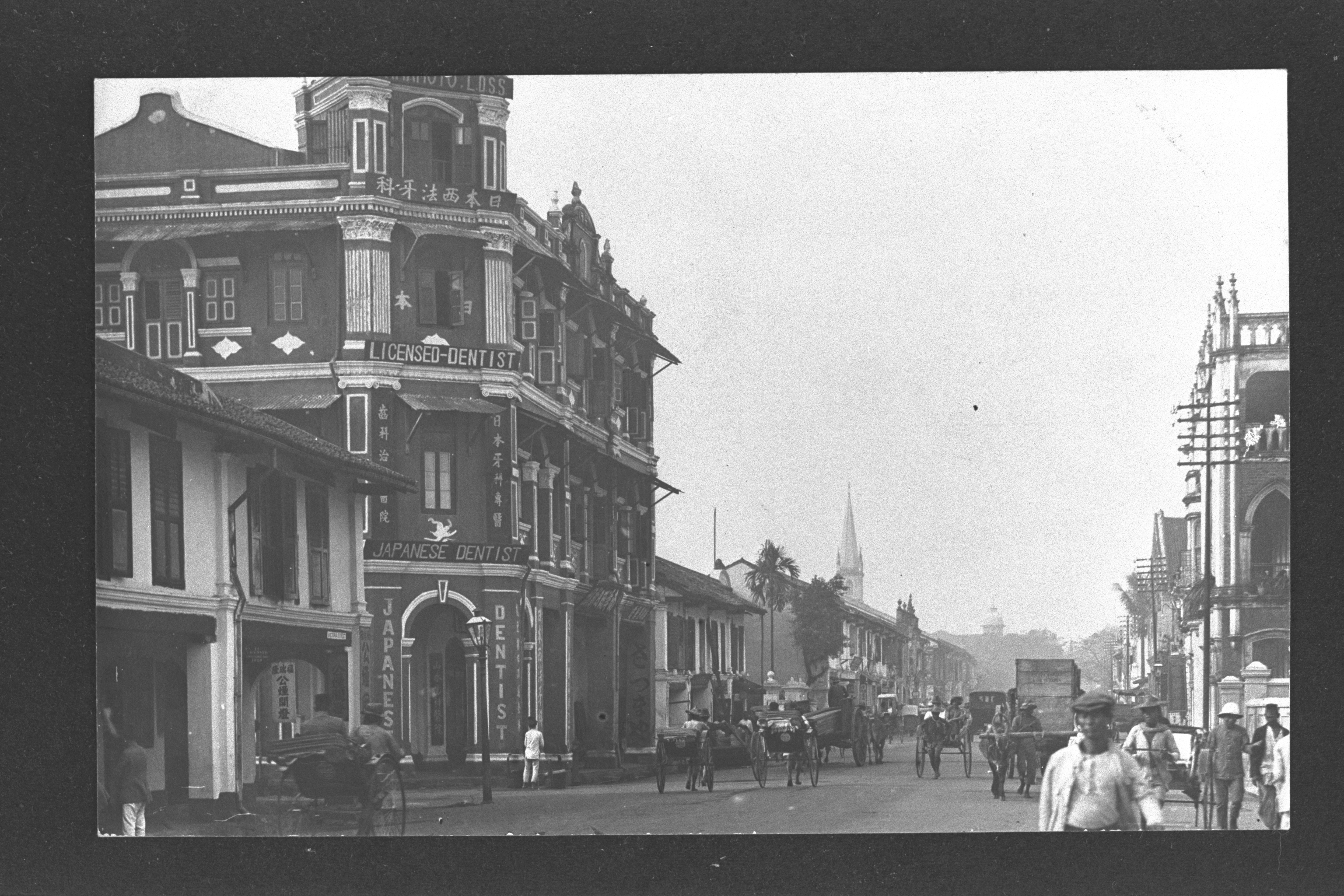Developed in 1822 by George Coleman – Singapore’s first architect and Stamford Raffles’ consultant on the first Town Plan – the Fort Canning Christian cemetery had approximately 600 graves interred. While most graves belonged to those of European descent, there was a substantial number of Chinese Christians buried at the site.
The burial site soon became full, and Reverend Robert Burn, the resident chaplain, applied for a new burial site in 1827. Given an option to either select a new site for the cemetery or to enlarge the existing location, he opted for the latter. In 1845, the cemetery was further extended to allow the separation of Protestant and Catholic burials, with current cemetery walls and gateways added in 1846.
The cemetery was eventually closed in 1865, and the state of the burial grounds began to deteriorate. In 1953, the City Council exhumed the cemetery and created a “Garden of Memory”. Some gravestones were recovered, and these were impeded into the walls of the former cemetery and still stand today.
Over the next two decades, the remaining grounds were gradually cleared to make way for Fort Canning Green. Many of the tombstones and statues were relocated to the Armenian Church of St Gregory the Illuminator on Hill Street.
The twelve gravestones that currently still stand on the old grounds were moved there from the Bukit Timah Christian Cemetery when they were exhumed in 1970. Other original monuments, such as the two Gothic gates designed by Captain Charles Edward Faber, and the James Brooke Napier Memorial, built in memory of the infant son of William and Maria Frances Napier, remain at Fort Canning Green as standing testaments to the senior servants of the British colonial administration who were buried at the cemetery.
Buildings and sites featured on Roots.SG are part of our efforts to raise awareness of our heritage; a listing on Roots.SG does not imply any form of preservation or conservation status, unless it is mentioned in the article. The information in this article is valid as of May 2019 and is not intended to be an exhaustive history of the site/building.




